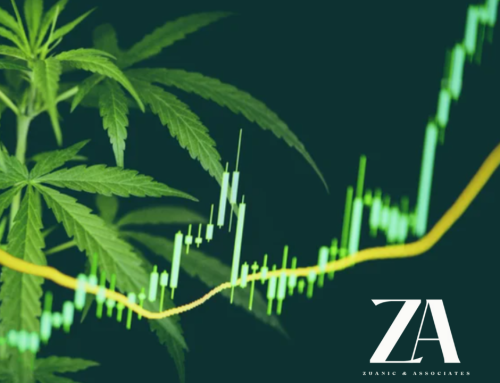Medical Marijuana Market Forecast to 2028
New York – The market growth is attributed to increasing approvals of medical marijuana products and rising acceptance of the medicinal use of marijuana. However, the illegal use of cannabis as a street drug and misconceptions regarding marijuana limit the market growth.
Medical marijuana is in its introduction stage in the medical health industry. It is a potent product accepted globally, where Chinese medicines are already being manufactured using these plants, and that too with a long history associated.
Medical marijuana remains a significant influence in the healthcare industry to treat cases that are not entirely advisable with traditional medicines. Medical marijuana is just a typical marijuana plant that is processed to get the fundamental composition of cannabinoids, which is necessary to synthesize the product to be in use.
Countries in North America have legalized the use and cultivation of medical cannabis. For instance, in 2012, Uruguay became the first country in the world to legalize the recreational use of cannabis.
Similarly, in 2014, Brazil authorized the use of medical cannabis, and in 2016, it approved the import of medications based on CBD oil and products made from THC and marijuana flowers. In 2017, Peru approved a law regulating the medicinal and therapeutic use of cannabis and its derivatives.
In 2018, the Government of Canada passed the Cannabis Act, which created a strict legal framework for controlling the production, distribution, sale, and possession of cannabis across Canada. In the US, as of February 2022, marijuana was legalized in 37 states and the District of Columbia.
In the past few years, Mexico, Luxembourg, and Lesotho, among others, have joined the list of countries to legalize the use of marijuana for medical applications.
However, despite widespread legalization of the use of cannabis, its legal cultivation and production have earlier been mostly limited to developing countries. In September 2019, the Ministry of Commerce, Agriculture, and Fisheries of Jamaica announced a partnership with Harvard International Phytomedicines and Medical Cannabis Institute (HIPI) to conduct research on the pharmacological benefits of marijuana.
At the same time, Jamaica aims to capitalize on this partnership and utilize this opportunity to grow and develop its national marijuana industry. Moreover, the World Health Organization (WHO) states that ~80% of the world’s population utilizes marijuana or cannabis for medical remedies.
Therefore, the growing acceptance, cultivation, and production of medical marijuana in developing countries is contributing significantly to the growth of the medical marijuana market.
Based on the product, the medical marijuana market is bifurcated into dried form and extract form.The extract form segment held a larger market share in 2021.
Moreover, the same segment is anticipated to register a higher CAGR of 19.3% during the forecast period. The growth of the extract form segment can be attributed to the rising demand for liquid extracts in medical applications, increasing health and wellness trends with the consumption of natural health products, and rising awareness regarding the benefits of extracts over dried marijuana.
Based on application, the medical marijuana market is segmented into pain management, Tourette, Alzheimer’s disease, migraines, depression and anxiety, multiple sclerosis, cancer, and others.The pain management segment held the largest market share in 2021.
However, the multiple sclerosis segment is expected to record the fastest CAGR of 20.3% from 2022 to 2028. The pain management segment is driven by the growing prevalence of trauma or hypertension, increasing demand for muscle and nerve stimulators, and the rising prevalence of lifestyle disorders such as obesity and diabetes.
Based on distribution channels, the medical marijuana market is segmented into retail pharmacy, e-commerce, and others. The retail pharmacy segment held the largest market share in 2021.
However, the e-commerce segment is expected to record the fastest CAGR of 19.8% during 2022–2028. The major driving factors for the retail pharmacy segment are a highly regulated supply chain, expert consulting, and patient solutions that improve adherence.
COVID-19 Impact – Medical Marijuana Market
Despite the increasing COVID-19 cases worldwide, there were vital growth opportunities for the medical marijuana market. The demand for nutritious products has increased during the COVID-19 pandemic.
A good intake of healthy food has helped in building immunity and avoiding getting infected by SARS-CoV-2. The companies producing hemp food products have experienced a rise in the sales of their products.
For instance, Hemp Foods Australia (HFA), an Australian company, sore its sales by 22% in the last quarter of 2020.
At present, countries such as Australia and New Zealand only produce hemp products for the food & beverages sector. The countries do not have CBD-based products as there is no permit to use cannabis other than for medicinal usage.
On the contrary, in Hong Kong, CBD-based products are available in the market despite the food-related market being less. Likewise, in Japan, CBD-based food and drinks ranging from sweet drinks to lasagna are served in food service outlets.
However, countries such as China and India do not yet permit CBD-based food products. Thus, the increasing sales of cannabis and hemp products are expected to drive the market during the forecast period.
Various organic and inorganic strategies are adopted by companies operating in the medical marijuana market. The organic strategies mainly include product launches and product approvals.
Further, inorganic growth strategies witnessed in the market are acquisitions, collaboration, and partnerships. These growth strategies allow the medical marijuana market players to expand their businesses and enhance their geographic presence, thereby contributing to the overall market growth.
Further, acquisition and partnership strategies help the market players strengthen their customer base and expand their product portfolios. A few significant developments by key players in the medical marijuana market are listed below.
- In February 2021, CANAQUEST MEDICAL CORP announced a new production and distribution agreement with PurCann Pharma and SiliCycle Inc. This agreement facilitates CanaQuest’s planned production, distribution, and global export of Mentanine and Mentabinol formulations, through its wholly owned subsidiary, ADC BioMedical Corp.
- In May 2020, Aphria Inc., a leading global cannabis company, announced that it would transfer its stock exchange listing from the New York Stock Exchange to The Nasdaq Global Select Market after the market close. The company expects its common stock will begin trading as Nasdaq-listed security and will continue to be listed under the ticker symbol “APHA.” This transition will not impact the company’s primary listing on the Toronto Stock Exchange (TSX: APHA).
A few major primary and secondary sources referred to while preparing the report on the medical marijuana market are the World Health Organization (WHO), the Centers for Disease Control (CDC), and the Food and Drug Administration (FDA), among others.
(This information is primarily sourced from Reportlinker. Highly Capitalized has neither approved nor disapproved the contents of this news release. Read our Disclaimer here).



































